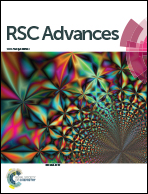Synthesis of substituted pyrroles using a silver-catalysed reaction between isocyanoacetates/benzyl isocyanides and chromones†
Abstract
A novel synthetic strategy to construct substituted-pyrroles has been developed using silver-catalysed reactions between isocyanides/benzyl isocyanides and chromones. These reactions proceed under mild conditions and yield polysubstituted pyrroles with efficient yields. The silver catalyst plays a key role in sequestering and activating the isocyano group and in sequential Michael addition and cyclization reactions.


 Please wait while we load your content...
Please wait while we load your content...